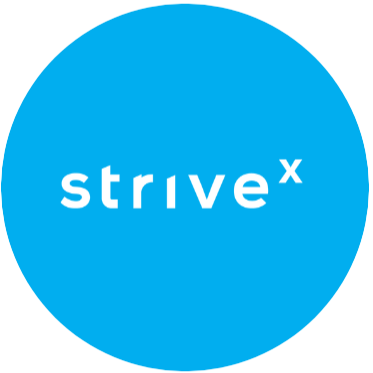Almost everyone loves a good cup of joe, which explains why there are more than 38,000 dedicated coffee shops across the USA and we spend $47 billion a year buying food and drinks from them. However, buying coffee from a café is a lot different than running a café, so if you’re thinking of starting a new coffee shop business, here’s what you need to know.
How profitable is a coffee shop?
US coffee shops typically generate profits of 15% (EBITDA), with sit-in cafés earning about $300 to $800 per square foot per year and walk-in ‘kiosk’ style coffee shops earning up to $1,300 per square foot per year. The actual profits your venue generates will depend on your location, the type of food and drink you sell and your product pricing structure.
Do I need any qualifications to run my own café?
No, although previous experience in the hospitality industry would be a bonus and, if you’re buying into a major coffee chain, you’ll need to meet minimum liquid cash and net worth requirements.
12 Steps to start a coffee shop
What does it take to get a new coffee shop off the ground? Here are 12 points to get you there:
1. Conduct research
Before you commit time and money to your project, you should conduct essential research. This is the kind of information you need to know upfront:
- Where will you base your business?
After your food and drink offering, the location of your business is the most important part of opening a coffee shop. You want a location with high visibility in an area with good foot traffic and perhaps a parking lot nearby. You also want a viable customer base. Do the math. Is the area where you want to open big enough to support another coffee shop? Can you attract enough people to your café to sample your menu? Are there already too many coffee shops selling in the same territory? If your chosen location is either too competitive or the local population is too small to support your business, look elsewhere.
- Who are your target customers?
Few coffee shops can appeal to everyone. Instead, you’ll aim your business at a small segment of the people who live and work in your area. Who are they? What is their price point? What expectations will you need to meet – for example, are you fast and simple, selling coffee for folks on the move, or are you the kind of café where people want to linger and enjoy a light meal? Determine your ideal buyer, then shape your theme, menu, branding and marketing accordingly.
2. Choose a concept
If you’re not buying into one of the major coffee shop franchises, you need to design the look, theme and style of your café from scratch. There are three basic coffee shop formats:
- Coffee to go: This is a simple kiosk store where customers order at the counter and then take their coffee or food away with them. Your menu is basically drinks plus snack items, such as donuts.
- Counter-service café: Similar to above, but now you add a few tables and chairs for customers to eat and drink inside as well as buy coffee to go. No wait service. Your menu comprises drinks, snacks and light meals such as sandwiches.
- Full service café: This is more like a casual restaurant. Customers are seated at tables and served by staff who bring their order to them. Your menu can include drinks, alcoholic beverages, snacks, sandwiches, cakes and light hot meals.
Clearly, the more bells and whistles your venue offers, the more it will cost to set up and maintain. However, your average sale will typically be larger the more sophisticated your café is. You could also boost customer traffic by joining with another business, such as an existing book shop, where you feed off each other’s customers. If you have space, you could also add a drive thru to capture more commuter traffic.
If you choose to buy into one of the major coffee shop chains your format will be decided for you, as will your price point, décor, menu and marketing. This route can be faster to get started and provide some added guarantee of success, but it can also be expensive. For example, to open a Dunkin’ Donuts franchise you can expect to spend anywhere from $437,000 all the way up to an eye-watering $1,787,000.
3. Write a business plan
If you’re seeking external investment or a commercial business loan to open your café, you’ll need a detailed business plan to support your pitch or application. Investors and lenders will want to know why you need their funds and what the money will do for your new coffee shop. Business plans should do more than paint a rosy picture – explain the risks involved, what the downsides could be – and how you intend to overcome them.
Even if you don’t need investment or a loan, a business plan can still be a very useful vital tool. Use it as your business manual, referring to the contents to guide your strategy and manage your financials.
Find out more about creating your business plan here.
4. Get funding
If you don’t have enough cash on hand to launch your new business on your own, you’ll need funds from investors or lenders. Many new business get started using financial support from friends and family, but if that’s not an option, there are networks of venture capitalists and angel investors readily available online. Bringing in external investment can give you the cash you need to get your coffee shop off the ground but be aware that investors will usually want a piece of the action in exchange for their money. This means you will need to give up a share of your ownership and you may lose overall control of the business.
With a business loan you don’t have to surrender a share of your store to get the funds. Although it’s never easy for new businesses to borrow money, some lenders have special products and programs for startups and entrepreneurs. These types of financing include:
- Term loan – this is a lump sum that you pay back over time. Borrow up to $5million over as long as 25 years. Collateral may be required.
- Business line of credit – a loan that functions like a high-value credit card. Withdraw cash anytime up to the maximum of your credit limit. You only pay interest on the sum you withdraw, not the whole line. This can significantly reduce your borrowing costs. Collateral may be required.
- Merchant cash advance – borrow against the value of your credit/debit card sales. As your card sales increase, your credit limit goes up. Pay the loan back with a small percentage of your weekly or daily card sales. No added collateral is required.
- Equipment loans use the asset you’re financing as security, similar to a car loan or a residential mortgage, so no added collateral is required. Buy machinery, furniture, technology, etc. Use the equipment as you pay for it.
To get these types of loan you can approach banks, credit unions and online lenders one by one, or you can use the services of a loan marketplace that will immediately introduce you to a choice of loans from a range of lenders. Some marketplace platforms can also give you advice and help you with the application process. This can be especially useful for borrowers who have never taken out a business loan before.
5. Find a commercial space
Your coffee shop concept and your business location influence each other. For example, if you choose a location in a downtown area where there are lots of offices, you may do well by offering lunchtime cuisine and a place for office workers to hold impromptu meetings. Alternatively, if your location is near a busy transit hub, a simple kiosk store selling coffee to go may be in order. Keep in mind that if you lease or buy a space that was not previously a restaurant or café, you’ll need to convert the premises for the sale of food and drink – which may also mean re-zoning – and make sure it complies with state and local health and safety rules.
6. File for permits and licenses
Venues that sell food and drink – including coffee shops – are governed by a host of laws, and you’ll need to get the necessary licenses and permits to operate. If you sell alcoholic beverages, you’ll need to register with the federal Alcohol and Tobacco Tax and Trade Bureau (TTP) and obtain a liquor license. You’ll also need to get state and local operating licenses and permits for your location, including a health inspection permit from local health inspectors. They will need to inspect your café to ensure it meets hygiene and safety standards before you open for business.
Required licenses and permits for a coffee shop:
- Business license – usually provided by local or state agency
- Employer Identification Number (EIN) – available from IRS
- Food service license – from local authority such as city manager’s office
- Liquor license – from TTB and your state’s Alcoholic Beverages Control agency
- Health permit – from your local health inspection agency
7. Design your coffee shop layout
The design and efficiency of your coffee shop will have great impact on your business. You want a space that functions well but also provides customers with a pleasing experience. All venues that sell food and drink, including simple coffee shops, are divided into two sections – front-of-house and back-of-house.
Front of house: This is the area of your café where customers are served.
- Customer capacity – ensure that your café can accommodate the number of customers you expect to serve at any time based on the size of your dining area and the service you provide. This may be less critical for kiosk stores, but if you’re offering a sit-in service you can either maximize the number of seats to increase revenue or offer spacious seating arrangements for a more relaxed experience. Keep in mind that customer numbers will also usually be restricted by the fire code set by your local health and safety inspector.
- Customer experience – as well as creating a free-flowing space that allows your café to work efficiently, avoid aspects that can degrade the customer experience such as visible bussing stations and tables sited close to restroom entry points.
- Furniture – your furniture should be comfortable for your guests and fit your store’s theme. Consider style, material, and durability to ensure it can withstand the demands of daily use in a commercial setting.
- Ambiance and décor – the ambiance and decor of your front-of-house area are important to create an inviting atmosphere for customers. Specialty lighting, pleasing color schemes, artwork, and music can enhance the customer experience and create a cohesive atmosphere. Pay attention to small details such as table settings, wall decorations, and even plants or greenery to add a touch of freshness and visual interest.
- Cleanability: In an environment where spills and messes are inevitable, it’s essential to choose materials and finishes that are easy to clean and maintain. Select furniture coverings and flooring that are stain-resistant and durable, such as laminate, vinyl or stone.
- Traffic flow: Your workers need to move efficiently around your coffee shop. Ensure your layout provides clear pathways for servers to navigate between tables, serving stations and the kitchen area.
Back-of-house: This is the area of your café that customers usually do not see and where food and some speciality drinks are prepared. It includes kitchen, storage areas, cleaning stations etc. You want a layout that handles all of the back-of-house tasks with good traffic flow and efficiency.
- Ware-washing – you’ll need sufficient space for a ware-washing area. This area should include a dishwashing machine, a three-compartment sink for manual washing, space for dish racks, and shelving for clean dishes.
- Dry and cold storage – dry storage spaces should be clean, organized, and easily accessible for inventory management and stock rotation. Cold storage spaces, such as walk-in refrigerators and freezers, should be strategically placed to minimize the distance food needs to travel from storage to preparation areas.
- Food preparation – an efficient food preparation area controls the flow of ingredients, equipment, and personnel. This area should include sufficient counter space, cutting boards, sinks, and storage for utensils and equipment. Placing preparation areas close to refrigeration and dry storage areas can help streamline workflow and reduce unnecessary movement.
- Cooking – this area should accommodate your café’s specific cooking equipment needs, such as ranges, ovens, grills, and fryers. Consider ventilation and fire safety protocols when planning the layout of the cooking area. Proper ventilation systems should be in place to remove heat, smoke, and cooking odors from the kitchen.
- Service – this area should provide quick and efficient plating, ensuring proper organization of prepared dishes. It should be equipped with counters, warming equipment, and storage for plates, utensils, and garnishes.
8. Find a source for your coffee beans and supplies
Your key food suppliers will be determined by the theme of your café – for example if you’re operating an artisan coffee shop that specializes in rare coffee types, you’ll need suppliers who can get those exotic coffee beans to you as fast and as fresh as possible. Depending on the type of café you’re running, you’ll need food suppliers for the following:
- Meat/fish/poultry/game
- Vegetables and fruits
- Rice and pulses
- Oils and ingredients to make sauces and marinades
- Desserts, cakes and pastries
- Soft drinks
- Alcoholic drinks
9. Order your coffee shop equipment
Your equipment needs will also be shaped by the type of café you operate. Typical commercial kitchen and back-of-house equipment includes:
- Coffee brewers
- Coffee grinders
- Airpots
- Espresso machine
- Coffee roaster
- Hot water dispenser
- Reach-in refrigerator
- Ice machine
- Blenders
- Compartment sink
- Freezer
- Dishwasher
- Glass washer
- Work stations
- Microwaves
- Ventilators
- Storage racking and cabinets
- Pots, pans, knives, strainers, sieves etc.
- Cleaning equipment, scrubbers, rubber gloves etc.
If you don’t have the cash to buy the equipment you need, consider equipment financing that lets you use the equipment as you pay for it. You may also be able to find some used commercial kitchen equipment that will be cheaper, although you should always check for damage and faults before making any large purchases.
10. Hire and train your staff
Unless you plan to cover all the bases yourself, you’ll need employees to make your coffee shop work. You may be able to operate with only a small number of experienced employees, such as your head barista, in the early days of your venture. For unskilled work, bulk up your staff numbers with less experienced workers who will command lower salaries.
The total number of employees you need will be determined by the size of the business and what kind of service you provide.
11. Market your coffee shop
As the old saying goes, advertising pays – and you’ll need to market your new café to establish a solid customer base. Experts suggest allocating up to 20% of your operating budget to marketing activities in the first year of operation.
Before you start any kind of marketing activity, conduct some basic research – what are your competitors selling? What kind of loyalty programs do they offer? Are there any successful promotional tactics that you can mimic? Create a plan that promotes your brand and sets your coffee shop apart from all the rest. Utilize a range of marketing actions to get your story across:
- Social media
- Flyers to local residents and commercial locations such as office blocks, hospitals, bus stations
- Local advertising
- Promotions for special products, discounts and loyalty deals
- Product tastings
- Sponsorships of local school sports teams
- Special events
12. Host a soft opening
Before you go live with your shiny new café, you’ll want to run some tests to make sure everything works and to iron out any glitches. In the hospitality trade, these tests are called a ‘soft opening’ and you will usually invite friends, colleagues and contacts garnered from your business’ social media accounts to come and kick the tires. Typically, you offer discounts or some other benefit to those that attend. In return, you get to ask them for a detailed review.
Holding more than one soft opening – perhaps for a whole week before your grand launch – can give you valuable business information, allowing you to sort out any kitchen issues, finetune menus, improve ambience and décor and tailor your pricing.
How much does it cost to open a coffee shop?
When it comes to cost, the price to turn a vacant space into a kiosk type coffee shop or an upmarket full-service café will depend on your location, the size of your operation, your leasing and build-out costs and the sophistication of your fixtures and furnishings. Expect to spend anywhere from $60,000 to $300,000 if your venue includes features such as a parking lot or drive-thru. No matter if you’re leasing the space or buying the property for cash or with a commercial mortgage, be aware you will also be responsible for property taxes, permits, inspections and agency fees.
What do coffee shop startup costs include?
The more sophisticated your coffee shop is, the more it will cost to launch, but in most cases you should expect to pay for the following to get your café started:
- Lease deposit and fees
- Utility deposits
- Build-out costs
- Furniture and equipment
- Technology costs – including POS system, CCTV and alarm
- Inventory and basic supplies
- Marketing costs – including website build
- Signage
- Employee recruitment and training costs
- Insurance premiums
- Permit and license fees
- Inspection fees
- Legal expenses and business registration costs
How Swoop can help
Running your own café can be lucrative and a lot of fun, but you’ll need cash to get you there. Funding is where Swoop can really help. No matter if you’re launching a brand-new coffee shop, or you’re buying an established business, chances are you’ll need finance to make the operation grow. Many types of business loan are suitable for coffee shops, but working with finance experts can make all the difference when applying for funding. Contact us to discuss your borrowing needs, get help with loan applications and to compare high-quality business loans from a choice of lenders. Eliminate the financial grind. Register with Swoop today.













 yet? Register here!
yet? Register here!